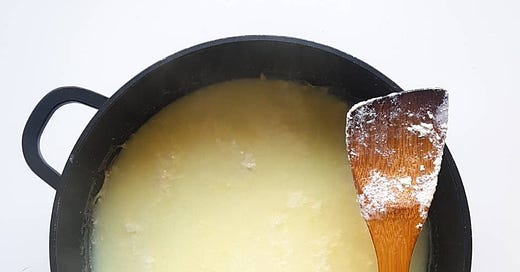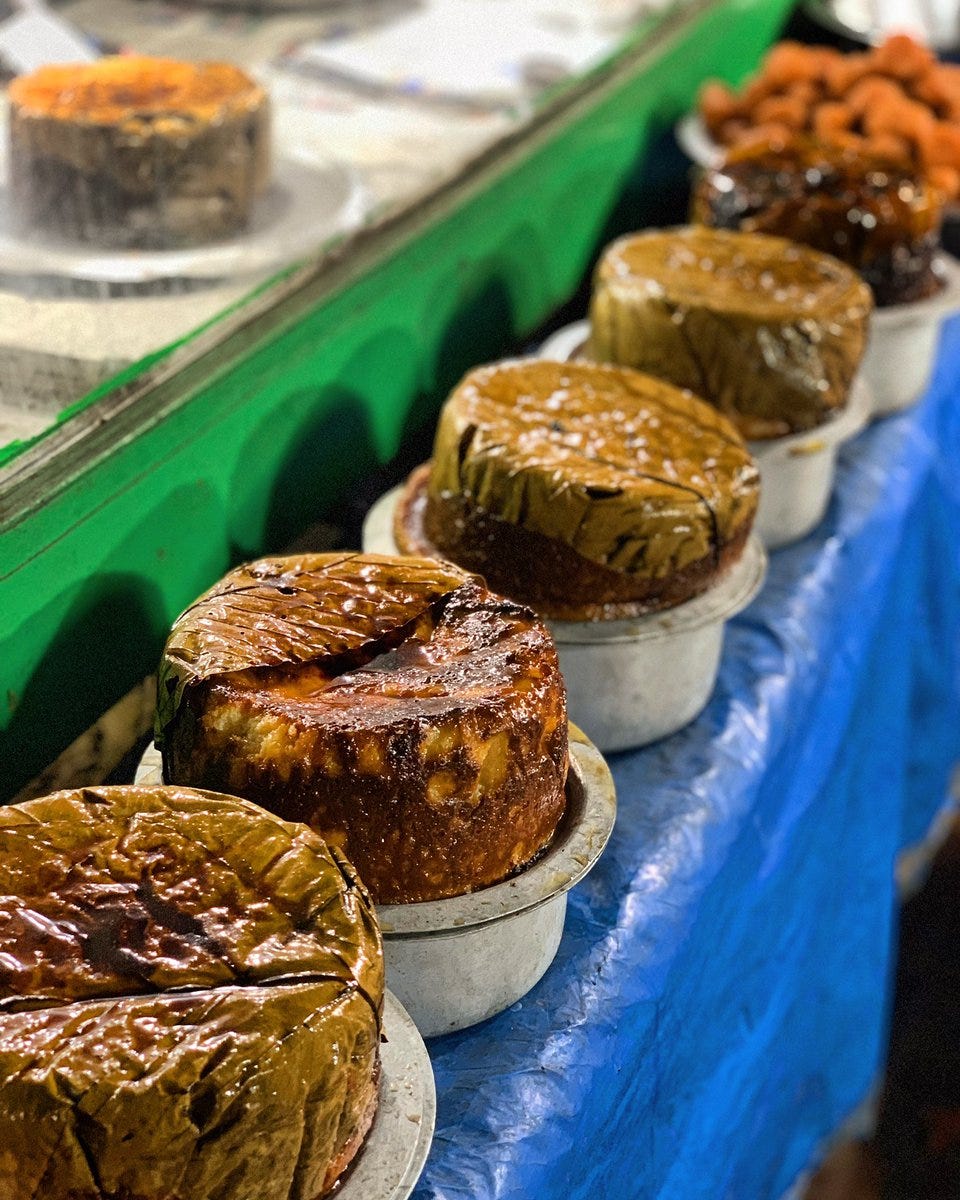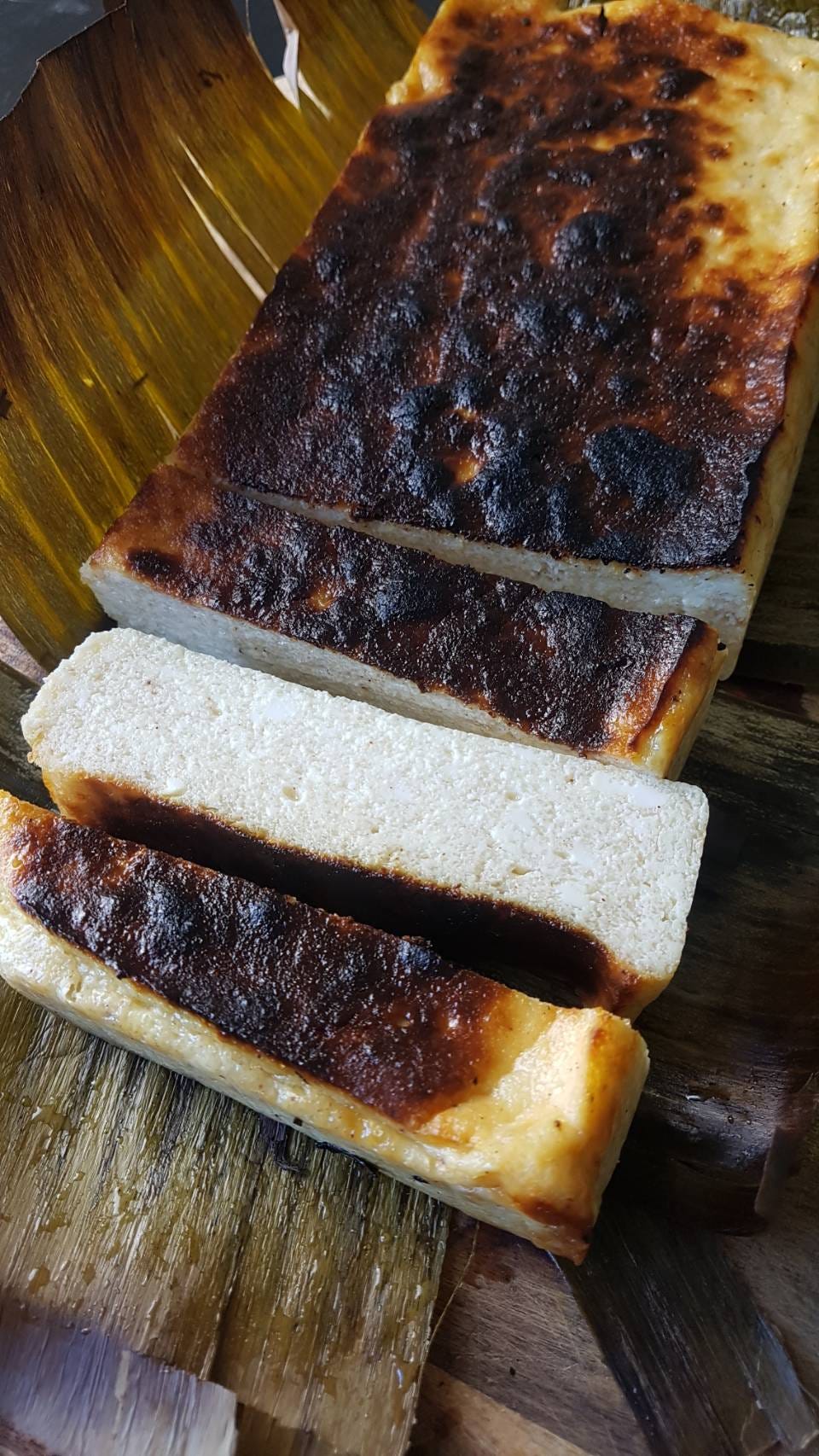On fresh cheese
The past few weeks, I’ve been working on our third issue of SEASONINGS Magazine, the Deepavali issue, and falling in love with Indian culture. It is so rich and beautiful that you can really get sucked in. Just in the past week while reading more about it, I’ve been massaging my scalp with oil the way Indian women do (a process known as champi), bought blockprinted cloths, ogled at so many photos of Indian sweets on social media, and got my hands busy cooking Indian dishes and sweets.
I find Indian sweets particularly fascinating - the more I researched, the more diversity I found. There are the traditional milky sweets (mithai) that are rich with religious significance, cakes influenced by European technique, sweets that were a result of Muslim conquest, and a range of sweets made with fresh cheese (chhena).
Cows are sacred in India and dairy is enshrined in Indian mythology and literature, and the deity Krishna himself was known for his love of dairy (they call him the ‘butter thief’). Curdling milk, through the addition of a coagulating agent such as lemon juice or vinegar, was perceived as a sin for ‘damaging’ sacred milk. Any milk that had formed curds would be thrown out instead of being used to make mithai.
Opinions are split as to how this taboo technique came to take root in India, but some attribute it to the influence of the Portuguese who settled in Bengal, and brought with them their love of fresh cheese (queijo fresco) and their expertise.
An acidic substance, when added to milk, results in the splitting of curd from whey. In India, this acidic substance could be dahi (yogurt or curd) or buttermilk leftover from the churning of butter from dahi. The curd is drained and hung to form what the locals call chhena, similar to cottage cheese. When these curds are pressed further to expel liquid, you’ll get paneer, a firm cheese that can be cubed and added to a range of savoury Indian dishes. Now, there is a whole range of Indian sweets that incorporate fresh cheese.
One of the most fascinating of these desserts to me is chhena poda, which literally translates to ‘burnt cheese’. The story goes that a dessert-maker in Odia had mixed some chhena with sugar and spices one night, and left it by mistake on a charcoal stove (chulha) that was still warm from earlier use, and discovered his scrumptious mistake the next day.
Today, the dessert is made during festivals such as Diwali by pouring the cake batter into a tin lined with leaves, and setting it over a chulha. A lid with more charcoal is placed on top of the tin, essentially slowly baking the cheesecake. At the end of the long and slow baking process, the cake emerges charred with caramelly edges, and infused with the flavour of charcoal smoke.
For the issue, I really wanted to recreate this dessert because it is so sad that Basque cheesecake has really taken social media by storm but this burnt cheesecake from India is so unknown! I lined my tin with banana leaves, baked the batter until it set, broiled the top just like a Basque cheesecake, before smoking it in a wok set-up lined with leaves.
The result was wonderful in its simplicity - with just chhena, sugar, and spice on the ingredient list, it really celebrated the fresh cheese.
Here’s a recipe for homemade cheese. Needless to say, the quality of the cheese is entirely dependent on the quality of the milk. You can eat it straight from the pot (like I did - there is nothing like it), have it with fresh fruit and drizzled honey, or press it further to make paneer. I found the whole process really gratifying and hypnotic. Hope you’ll enjoy it too.
Homemade Cheese
Heat 2.5L full cream milk (unhomogenized if possible) and a big pinch of salt to 90C. If you do not have a thermometer, bring the milk to a boil, then cool for 5 minutes. Stir in 250g all-natural yogurt. Add a few drops of vinegar until the mixture splits. Allow to sit for 10 minutes, covered. Strain through a piece of cotton and hang until it reaches your desired consistency. Press the cloth-wrapped cheese with a weight to expel more water and make paneer.
Content like this is only made possible with the support of Singapore Noodles’ community members. At S$8 a month, members receive full access to recipes and cooking tutorials on the website, and monthly cooking classes. This month, we will be cooking chicken rendang together (registration for members only!) Join the community here ✨






